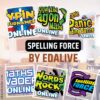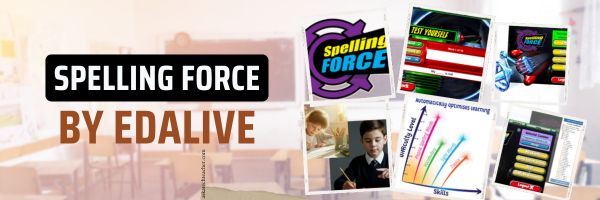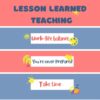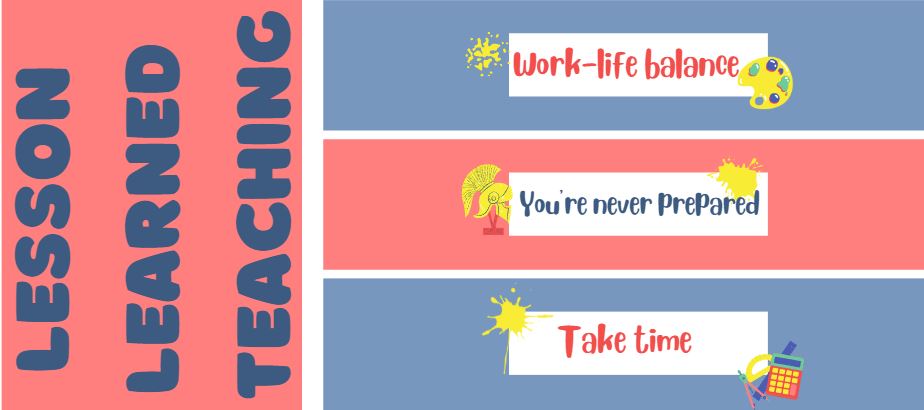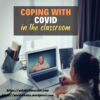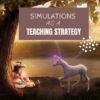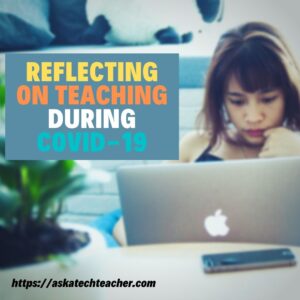Category: Guest post
Great App to Teach Spelling
Too often, students think spelling is solved by the red squiggly lines that alerts writers to misspellings, but those can be wrong. The only real solution is students learn to spell organically, starting early in their education career and continuing throughout. Here’s one good tool to make that happen:
Spelling Force by EdAlive:
A Smart Solution for Mastering Spelling
Spelling Force, developed by Australian edtech company EdAlive, is a powerful and engaging platform designed to boost spelling proficiency in children through interactive learning, intelligent adaptation, and curriculum alignment. With a proven track record in classrooms across Australia and beyond, Spelling Force is a valued resource for teachers, students, and parents alike.
What is Spelling Force?
Spelling Force is an online spelling program designed for students from Year 1 to Year 10, although it is most commonly used in primary and lower secondary classrooms. It combines dynamic learning activities with a powerful adaptive learning engine that tailors content to each student’s individual needs. Students work through interactive spelling exercises, games, and quizzes that are designed not just for repetition, but for true understanding and mastery.
Unlike many spelling tools that simply drill lists of words, Spelling Force offers a much richer and more strategic approach. It identifies each student’s weaknesses and presents targeted exercises to improve their skills, building confidence and competence along the way. (more…)
Share this:
- Click to share on Facebook (Opens in new window) Facebook
- Click to share on X (Opens in new window) X
- Click to share on LinkedIn (Opens in new window) LinkedIn
- Click to share on Pinterest (Opens in new window) Pinterest
- Click to share on Telegram (Opens in new window) Telegram
- Click to email a link to a friend (Opens in new window) Email
- More
Be Featured on Ask a Tech Teacher
I get thousands of visitors a day–over six million since I started. The most common reason why you-all drop by is for resources. I have lots of them–lesson plans, tips and tricks–but one area I have not enough depth is the experiences of fellow teachers:
- your personal teaching experiences
- your informed take on tech ed topics
- Education pedagogy
If you’re interested in guest posting on this blog or start your own column, leave a comment below and I’ll be in touch. It’s a challenging time but one we-all can get through if we talk to each other.
Share this:
- Click to share on Facebook (Opens in new window) Facebook
- Click to share on X (Opens in new window) X
- Click to share on LinkedIn (Opens in new window) LinkedIn
- Click to share on Pinterest (Opens in new window) Pinterest
- Click to share on Telegram (Opens in new window) Telegram
- Click to email a link to a friend (Opens in new window) Email
- More
A Helping Hand: Assistive Technology Tools for Writing
 I don’t write enough about special needs so when Rose contacted me with an article idea, I was thrilled. Rose Scott is a literary teacher with a goal of making education comfortable for students with special needs. Her dream is to help students explore their talents and abilities.
I don’t write enough about special needs so when Rose contacted me with an article idea, I was thrilled. Rose Scott is a literary teacher with a goal of making education comfortable for students with special needs. Her dream is to help students explore their talents and abilities.
In this article, Rose writes about a little-known problem that students may unknowingly suffer from that may make it look like they are plagiarizing when–to them–they aren’t.
Read on:
Many people have come to believe that plagiarism is intentional and evil, and all students whose works have text coincidences are shameless wrongdoers. While it may seem that the majority of plagiarists do turn out to be cheaters, there are exceptions. Have you ever heard of cryptomnesia?
Cryptomnesia, according to the Merriam-Webster medical dictionary, is “the appearance in consciousness of memory images which are not recognized as such but which appear as original creations.” In other words, a person says something for the first time (as he or she thinks), but in reality he/she has already mentioned it, and now just doesn’t remember the previous occurrence.
Share this:
- Click to share on Facebook (Opens in new window) Facebook
- Click to share on X (Opens in new window) X
- Click to share on LinkedIn (Opens in new window) LinkedIn
- Click to share on Pinterest (Opens in new window) Pinterest
- Click to share on Telegram (Opens in new window) Telegram
- Click to email a link to a friend (Opens in new window) Email
- More
How to incorporate podcasting into your curriculum this school year
How to incorporate podcasting into your curriculum this school year
School is almost back in session and educators are busy working on curriculum for the upcoming school year that will challenge students, improve their communication skills and provide a platform to express their thoughts and interests. If you haven’t created a podcasting unit before, there are plenty of platforms that will help you get started with low or no start-up costs.
My son and I started The Middle School Mind podcast last fall as a way to give him a platform to express his, sometimes random, 6th grade thoughts. We had so much fun making the podcast that we’ve created a tutorial to encourage students to plan, produce and publish their own podcasts and hope educators will incorporate podcasts into their curriculum.
Why podcasting?
According to a recent survey published by Kids Listen, an organization of advocates for high-quality audio content for children, nearly two-thirds of the respondents have been listening to podcasts for more than one year.
Respondents cited that podcasts are fun and offer entertainment value while some offer educational value through current events, history or science and nature-themed shows as primary reasons for listening to podcasts. Many families like podcasts as a way to keep kids engaged and off screens and something the entire family can listen to in the car.
Meet The Middle School Mind
We started The Middle School Mind because we also love listening to podcasts. We started the show when my son started 6th grade and wanted his own YouTube or Twitch channel to stream video games like Minecraft and Fortnite.
My wife and I had strong reservations with him posting online content that would include his name or image. People can be cruel on the internet and online message boards and comments sections can be places that are detrimental to a middle schooler’s ego and view of self-worth.
We go by Father and Son on our show to maintain a level of anonymity and privacy. This allows my son to speak freely and openly on the show without fear of being judged, identified or bullied online. During our first season, we covered a wide variety of topics ranging from school resource officers, video games and even a two part episode where we interviewed middle school teachers (who also happen to be close family members).
Share this:
- Click to share on Facebook (Opens in new window) Facebook
- Click to share on X (Opens in new window) X
- Click to share on LinkedIn (Opens in new window) LinkedIn
- Click to share on Pinterest (Opens in new window) Pinterest
- Click to share on Telegram (Opens in new window) Telegram
- Click to email a link to a friend (Opens in new window) Email
- More
Lessons Learned My First 5 Years Of Teaching
It’s always interesting to find out what new teachers learned in their early teaching that affected their later years. Here’s Ask a Tech Teacher contributor, Elaine Vanessa’s, take on that–5 bits of wisdom she acquired while surviving the early teaching years:
My first five years of teaching were the shortest and longest years of my life. I was living the best and the worst time simultaneously. However, it was the most memorable time of my life that I don’t want to forget. Also, those five years made me a well-groomed educator and a better person in my life.
Every teacher has a dream of having a classroom with respectful kids having fun activities and love while learning. It makes teaching easy if kids love to be in the room every day. However, my first years were not like that. As I continued, I got better every year. There was one thing consistent; learning. Below are five lessons that I have learned in my first five years of teaching. I am sharing them in the hope of being a candle in someone’s darkroom.
Share this:
- Click to share on Facebook (Opens in new window) Facebook
- Click to share on X (Opens in new window) X
- Click to share on LinkedIn (Opens in new window) LinkedIn
- Click to share on Pinterest (Opens in new window) Pinterest
- Click to share on Telegram (Opens in new window) Telegram
- Click to email a link to a friend (Opens in new window) Email
- More
4 Long-Term Benefits of Bilingual Education
This is such a great article on the benefits of bi-lingual education. Sure, we intuitively know what these are, but what are the real metrics? From an educator with a passion for her calling, see if you have any reasons you’d add:
4 Long-Term Benefits of Bilingual Education
Raising bilingual children is the norm in Singapore. From an early age, the children living in this multicultural city are exposed to a number of languages at home, in their preschools, and in their communities. At the same time, the government here has adopted a bilingual policy wherein students are required to gain proficiency in English and their respective ethnic mother tongue, which is Mandarin for the Chinese*, Malay for the Malay, and Tamil for the Indians. If you’re staying in the country with your family for work, it’ll be a breeze to find a bilingual program that will provide your children with the right environment for improving their language proficiency. These schools can focus on your mother tongue, English, as well as other languages that your child might be interested in acquiring. With the assistance of the right bilingual program and teachers, your child will have a better chance of acquiring, retaining, and deftly using multiple languages.
The beauty of bilingual education is that it presents students with immediate as well as long-term benefits, many of which the children can utilize even as they find their places as productive members of the workforce and society at large. Here are some of the advantages of having your child undergo a bilingual education program and how they can benefit from it in the coming years.
Share this:
- Click to share on Facebook (Opens in new window) Facebook
- Click to share on X (Opens in new window) X
- Click to share on LinkedIn (Opens in new window) LinkedIn
- Click to share on Pinterest (Opens in new window) Pinterest
- Click to share on Telegram (Opens in new window) Telegram
- Click to email a link to a friend (Opens in new window) Email
- More
Coping with COVID in the Classroom

A lot of teachers are also authors. In an effort to spotlight their two hats, I feature teacher-authors on both my writing and education blogs. Guests can write about any topic they’d like as long as it revolves around those skills.
Today, I’d like to introduce Anne Clare, a teacher as well as a historical fiction author. Anne Clare is a native of Minnesota’s cornfields and dairy country. She graduated with a BS in Education in 2005 and set out to teach in the gorgeous green Pacific Northwest, where she and her husband lived. She also serves as a church musician, singing in and occasionally directing choirs, playing piano, organ, and coronet (the last only occasionally, when she forgets how bad she is at it.) After the birth of her second child, she became a stay-at-home mom, and after the birth of the third she became reconciled to the fact that her house would never be clean again, which allowed her to find time to pursue her passion for history and writing while the little people napped. Although she’s back to teaching, she continues to write historical fiction and to blog about WWII history, writing, and other odds and ends at thenaptimeauthor.wordpress.com.
I reviewed her amazing book, Where Shall I Flee, (click for my review and a purchase link) about the battle in Italy during WWII from the perspective of a female nurse. Today, I’m excited to share her story of teaching through the pandemic. With not only apocryphal but statistical stories about the damage done by the pandemic to student learning, I was eager to read about this through the eyes of a teacher in the trenches. I think you’ll enjoy this:
Coping with COVID in the Classroom
 I’ve always found that teaching is a profession that requires some flexibility. Since March of 2020, “flexibility” doesn’t seem like quite a strong enough word for the mental gymnastics required in maintaining any kind of workable learning environment. All of the teachers I know have their own stories of Covid craziness. Here are a few of mine.
I’ve always found that teaching is a profession that requires some flexibility. Since March of 2020, “flexibility” doesn’t seem like quite a strong enough word for the mental gymnastics required in maintaining any kind of workable learning environment. All of the teachers I know have their own stories of Covid craziness. Here are a few of mine.
The First Round
As soon as we heard that our state was going into full lockdown, my school’s faculty started looking for online options. I teach in a small “church school” with just over a hundred students. Small size has its own challenges, but when it came to pivoting to a new teaching plan, it allowed us to adapt quite quickly. Over Spring Break we set up Google Classroom pages, learned how to do Zoom, and created packets of papers for students’ families to pick up and drop off outside the school weekly. By the time break was over, we were ready.
Sort of.
Technical difficulties, struggling students, and the stress of a total change of lifestyle made online learning challenging.
Then there were difficulties with the physical space. My husband worked from home in our bedroom while my eldest daughter did her 4th grade work in her room, my son worked on first grade in his, and my youngest wrapped up her Kindergarten year at our kitchen table, occasionally weeping over the ipad when she couldn’t find the correct sheet. Meanwhile, I tried to record lessons in such a way as to keep my students accountable, tried to keep up with online correcting, and tried to be there to assist my children as needed.
While my faculty and I adapted to provide the best learning situation for our students that we could, I didn’t complain when we decided to end the school year early. It made sense—the loss of sports and extra curriculars meant that we finished our curriculum ahead of schedule anyway. Perhaps, after summer, things would return to normal.
The Long Haul
As I approached the 2020-2021 school year, I hoped (as I’m sure many did) that maybe things could go back to normal. They didn’t.
Share this:
- Click to share on Facebook (Opens in new window) Facebook
- Click to share on X (Opens in new window) X
- Click to share on LinkedIn (Opens in new window) LinkedIn
- Click to share on Pinterest (Opens in new window) Pinterest
- Click to share on Telegram (Opens in new window) Telegram
- Click to email a link to a friend (Opens in new window) Email
- More
Simulations as a Teaching Strategy
Simulations and games have grown from rote drills using a computer to challenging learning experiences for students that hone problem-solving and critical thinking skills. They are fun for students, keep them engaged, and teach the foundational pieces of a lesson. I
I’ve talked about gamifying elements here and here (and under this tag). One of our Ask a Tech Teacher contributors goes into depth about simulations–what these are and how to use them. The article’s about 1000 words and well worth the read:
Simulations as a Teaching Strategy – Everything You Need to Know
In the diverse and ever-evolving world of simulation, there’s no doubt that tactics such as gamification continue to have a positive impact across a broad range of industries and activities. This is certainly prominent in the workplace, where some 90% of employees say that gamification makes them better at their job and more productive at work. What’s more, employees experience an average 48% engagement increase through gamification, highlighting its ability to impart potentially complex subject matter to individuals.
This is why gamification and wider simulation strategies hold huge value in educational facilities across the globe. But what are the key considerations when leveraging simulation as a viable teaching strategy?
Share this:
- Click to share on Facebook (Opens in new window) Facebook
- Click to share on X (Opens in new window) X
- Click to share on LinkedIn (Opens in new window) LinkedIn
- Click to share on Pinterest (Opens in new window) Pinterest
- Click to share on Telegram (Opens in new window) Telegram
- Click to email a link to a friend (Opens in new window) Email
- More
A Year to Remember, A Year to Reflect: Pandemic Instruction
Ask a Tech Teacher contributor, Christian Miraglia, taught for 36 years before retiring. He has some interesting reflections on the year that was the pandemic:
***
A Year to Remember, A Year to Reflect: Pandemic Instruction
Over the past year teachers have been bombarded by colleagues, administrators, and social media pundits on which platforms can best serve them and their students. As an experienced educator who has been in the forefront of technology integration, this past year seemed like a tidal wave. Nearpod or Pear Deck, Google Classroom or Canvas, Flipgrid or Adobe Spark? What did one do?
Road Map
Once it was determined by my school district that we were continuing with distance learning when the school year started in 2020, there was a flurry of activity from our district in an attempt to create some type of training for teachers, many who were winging it in the Spring 2020 semester. Most of the training was put together to assist teachers with the basics of integrating technology such as using Google Classroom or Canvas. The district stayed away from the mandate of having to use one platform exclusively. As far as the pedagogy for using any type of technology integration, it was lacking. I think this could be said for most school districts. And this gets to my point. How did a teacher decide what was the best fit for their students?
Looking Back on Instructional Design
Now that the school year is over I can genuinely reflect on how I utilized my go to applications and programs. First of all, as a veteran Canvas user I continued on my use of the LMS. For me it served multiple purposes. One, all assignments were created so that students could have access 24/7. I made sure that there were only two assignments a week with the final assignment being a type of assessment. It is important to note that going forward I would record video instructions using Flipgrid for my students who did not attend on a given day. Integrated in the instructions were screen recorded examples of what I wanted students to achieve in the form of the assignment. Canvas’s ability to allow for Learning Tool Interoperability (LTI) with applications such as Flipgrid, EdPuzzle, Google Drive, Quizizz made by decision quite easy. For students having everything in one location was key as it eliminated navigational confusion. Time and time again I heard parents complain about their children having to use four to five different applications and getting lost in the process. I cannot fault them, nor can I fault many of the teachers who had little experience in course design and the pedagogy behind it.
Share this:
- Click to share on Facebook (Opens in new window) Facebook
- Click to share on X (Opens in new window) X
- Click to share on LinkedIn (Opens in new window) LinkedIn
- Click to share on Pinterest (Opens in new window) Pinterest
- Click to share on Telegram (Opens in new window) Telegram
- Click to email a link to a friend (Opens in new window) Email
- More
Be Featured on Ask a Tech Teacher
 I get thousands of visitors a day–over a million since I started. The most common reason why you-all drop by is for resources. I have lots of them–lesson plans, tips and tricks–but one area I have not enough depth is the experiences of fellow teachers:
I get thousands of visitors a day–over a million since I started. The most common reason why you-all drop by is for resources. I have lots of them–lesson plans, tips and tricks–but one area I have not enough depth is the experiences of fellow teachers:
- your personal teaching experiences
- your informed take on tech ed topics
- Education pedagogy
If you’re interested in guest posting on this blog or having your own column, leave a comment below and I’ll be in touch. It’s a challenging time but one we-all can get through if we talk to each other.
Share this:
- Click to share on Facebook (Opens in new window) Facebook
- Click to share on X (Opens in new window) X
- Click to share on LinkedIn (Opens in new window) LinkedIn
- Click to share on Pinterest (Opens in new window) Pinterest
- Click to share on Telegram (Opens in new window) Telegram
- Click to email a link to a friend (Opens in new window) Email
- More

